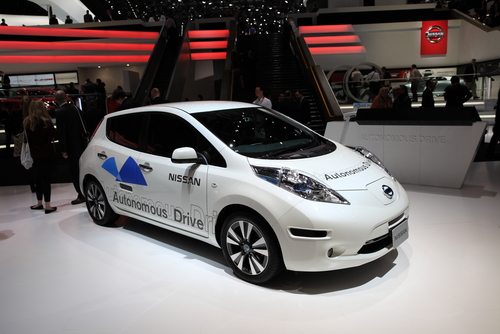 Many of us have been anxiously awaiting the marvelous wonders and technologies that were promised to us in science fiction movies. Everything from teleporters and robots, to common-place space travel has been in the back of our minds thanks to titles like Star Trek and Terminator. But today one of those fantastic inventions is finally becoming a reality: the driverless car.
Many of us have been anxiously awaiting the marvelous wonders and technologies that were promised to us in science fiction movies. Everything from teleporters and robots, to common-place space travel has been in the back of our minds thanks to titles like Star Trek and Terminator. But today one of those fantastic inventions is finally becoming a reality: the driverless car.
Tomorrow’s Technology, Today
The technology for automated cars actually began years ago. Many of the features found in newer cars on the market already contain some of the essentials for the technology of an automated car. Anti-lock brakes (ABS), speed sensors, and traction and stability control all come standard on most vehicles.
The wide array of sensors and cameras common in newer vehicles today are also a key factor. Many companies have rear view cameras in place for increased control and safety when backing up, as well as proximity sensors on every side of the car for those tricky parking maneuvers. Some car companies also provide optional adaptive cruise control. This feature not only lets the driver set a speed like conventional cruise control, but will automatically adjust that speed depending on the distance of the cars around.
Perhaps one of the most amazing and functional upgrades in the last few years is the adaptation of parking assistance. Varying levels of assistance are available through alarms and cameras to help drivers park more efficiently, to complete parallel parking, or for automated parking. These sophisticated systems use a variety of sensors and cameras and can be capable of parking a vehicle without driver assistance.
The Future of Automation
Leave it to Google to lead the way, although some of the big car companies are not far behind. The search engine giant recently developed and started real-world testing on the first fully-automated driverless car. The tiny two-seater isn’t likely to win any races with a top speed of 40 mph, but the original design is completely automated with no steering wheel and no pedals of any kind—just a start/stop button and display panel. The car is already in test production phase, although the actual test cars will have pedals and a steering wheel to conform to safety regulations.
BMW is testing a full-sized coupe that can drive, maneuver, and even slide into a controlled drift like something out of the movies. The German manufacturer, Audi, has also thrown its hat into the ring. Recent advancements in computer technology at Audi drastically reduced the size of the “brain” of the car, while increasing its capacities and dependability. Additionally, Nissan’s Autonomous Drive is expected on roads by 2020.
There are still a myriad of hurdles that need to be overcome before this technology becomes available for the masses. Systems will need to be developed and implemented to allow these cars to work across the nation no matter the surroundings. Communication between vehicles is also a concern so that automated cars will always know what other vehicles are around them at all times. Conversion kits for older cars will need to be created and distributed. And most of all, these vehicles must earn the public trust.
Current projections predict that by year 2050 nearly all cars on the road will be automated, if not completely driverless.

